Afrikakorps Luftwaffe Flying Helmet LKp N-101
CATEGORY: Version
SKU: 23.GOR.01.02.03.001.000
Estimated market value:
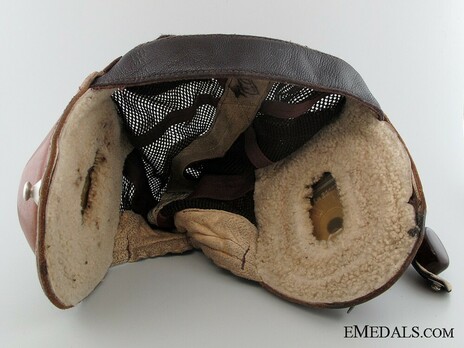
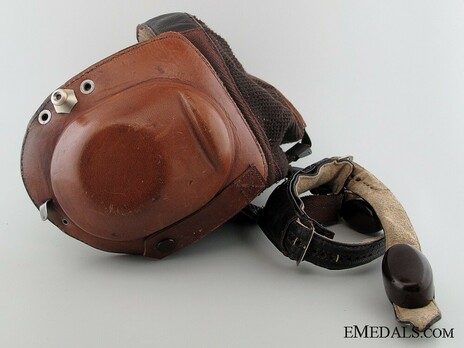
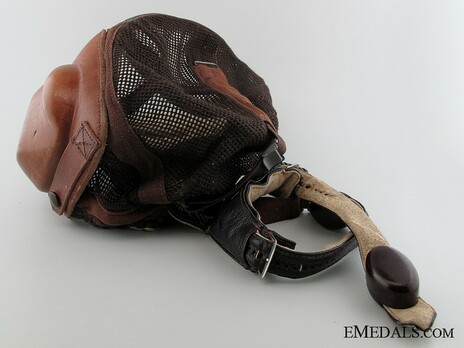
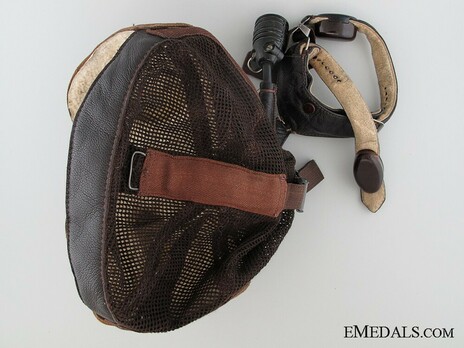
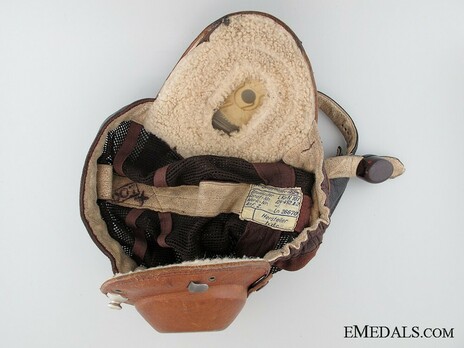
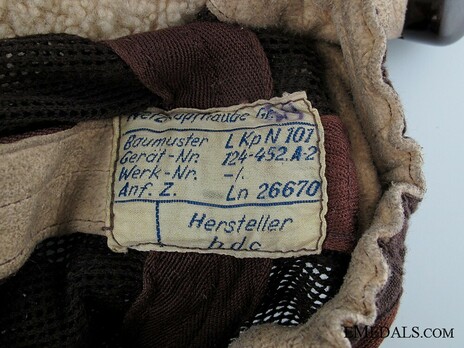
Estimated market value:
WWII Luftwaffe Model L Kp N 101 Summer Flying Helmet - The L Kp N 101 Netzkopfhaube net or mesh flying helmet was one of the most popular Luftwaffe flying helmets of the war. Designed for comfort, it was manufactured completely without a chin strap, relying on the straps of the oxygen mask to secure the headgear ensemble in place. It features fleece lined earphones which are housed in aluminum hemi-spherical domes, containing radio receivers, each earphone with overlaying plastic covers stamped "Ln 26602", with the exterior of the earphones covered in a thick tan leather. Each of the leather earphone covers have raised aluminum posts flanked by eyelets towards the front, a vertical leather strap with snap closures towards the rear and a clip at the bottom. Between the two earphones is a chamois backed leather headband at the front and a chamois backed, elasticized cloth strap at the rear, with the head itself encased in a dark brown, lightweight cotton mesh cap. The top of the mesh cap has an elongated cloth patch housing an adjustable cloth strap, the cap reinforced with brown cotton straps on the exterior. The underside of the mesh cap has a central leather strap lined with chamois, running from the front to the rear, size stamped "58" and stamped "DO7" towards the rear, the manufacturer's label sewn on the chamois at the front, the label inscribed "Netzkopfhaube Gr. / Baumuster L Kp N 101 / Gerät - Nr. 124-452.A-2 / Werk - Nr. - /. / Anf. Z. Ln 26670 / Hersteller / h d c" and size stamped "58". The rear of the helmet has a two-pronged leather strap sewn in place: the shorter strap with a short cable and plug maker marked "BAL GES." and marked "BLK v Fl. 27560", the other strap with a wrap-around adjustable leather neck strap lined with chamois, each side with two Siemens-Halske carbon throat microphones, marked "Mi 4b Ln. 26779-2", along with an adjustable length cloth strap attached to the left end with snap closure, receiving post on the right end, ensuring a snug fit around the neck. Light wear on the chamois, soiling on the fleece on the right earphone, peeling back of the fleece on the outer edge of the left earphone behind the aluminum post. Well-stitched overall, with quality-made, durable parts, near extremely fine.
During the Second World War, German troops stationed in northern Africa are generally referred to as the Afrikakorps. Technically, this is not entirely correct, since some German units operating in Africa were not actually part of the DAK (Deutsches Afrikakorps), and some units of it were, in fact, Italian ones. However, for the purpose of collecting so-called “tropical” uniforms and insignia, collectors have simplified the meaning of the term.
The first German troops were sent to northern Africa in February of 1941, to support their Italian allies against the British. The climate of the African continent made it necessary to wear specialised uniforms and gear that not only supported the soldiers in serving in a hot and arid environment, but also helped them in blending in with the landscape, which, in general, presented itself as brown, olive, khaki, or sand/tan in colour. Worn over long periods of time under the blistering desert sun, some uniforms were eventually bleached to white or off-white. Uniforms and insignia in these colours are often referred to as “tropical”, and it is worth noting that they weren’t just worn by members of units stationed in Africa, but in the entire Mediterranean theatre of war, including southern France, Italy, the Balkans, and Greece, as well as in southern Russia during the summer months. Tropical uniforms were worn by members of all three branches of the Wehrmacht: the Heer (army), the Kriegsmarine (navy), and the Luftwaffe (air force). Members of the Waffen-SS stationed in southerly regions also wore tropical-style uniforms, and even though they technically have no connection to the DAK, all tropical uniforms and insignia of all branches of the German military are listed here.
Luftwaffe Flying Helmets include unlined models for summer use. Models come with or without earphones and oxygen mask fittings.
Summer flying helmets were made of brown linen.
Luftwaffe flying personnel serving in warmer, tropical climate areas often wore a net top version flying helmet, known as “Netzkopfhaube”, designated as model LKp N-101. This flying helmet differs from other models not only by its thin mesh net top, but also by a lack of a chinstrap.
The flying helmet for summer use without earphones and oxygen mask fittings was referred to as model FK 34. It was used in airplanes without radio equipment and for training purposes. The flying helmet for summer use with earphones, a throat microphone, and oxygen mask fittings has several models. The earliest model is known as model LKp S-53, and can be identified by having oval, molded plastic earphone mountings. The later models, LKp S-100 and LKp S-101 have leather covered earphone mountings with a depression to hold the goggles strap in place.
A rare flying helmet known as LKp S-54 was used by aircraft commanders. It has additional internal features, allowing the wearer greater electronic communication potential.
Flying personnel on missions over bodies of water often wore a flying helmet cloth cover, either in white or yellow. It was supposed to make it easier to spot downed flying personnel in water.

Comments
Sign in to comment and reply.


Scroll Top